Located in southeast Mexico, between the Gulf of Mexico and the Caribbean Sea, the Yucatán Peninsula is one of the most popular destinations for snowbirds wishing to escape harsh winters and expats looking for a permanent home in the sun.
Our guide will help you to discover why the region is so popular with expats and what living in Yucatán is really like.
The peninsula includes the Mexican states of Campeche, Quintana Roo, and Yucatán and, in the south, large parts of Belize and Guatemala. In this guide, we will only talk about the Mexican part of the Yucatan peninsula.
Secure Peace of Mind with Best-Value International Health Coverage
International Citizens Insurance provide free, no-obligation quotes from the leading international health insurance providers with plans tailored to meet your needs. Trusted by thousands of expats worldwide.
Is the Yucatán Peninsular a good place to live?
The short answer is Yes, the Yucatán Peninsula is a great place to live if you are looking for great weather, a lower cost of living, good healthcare and friendly, easy-going people.
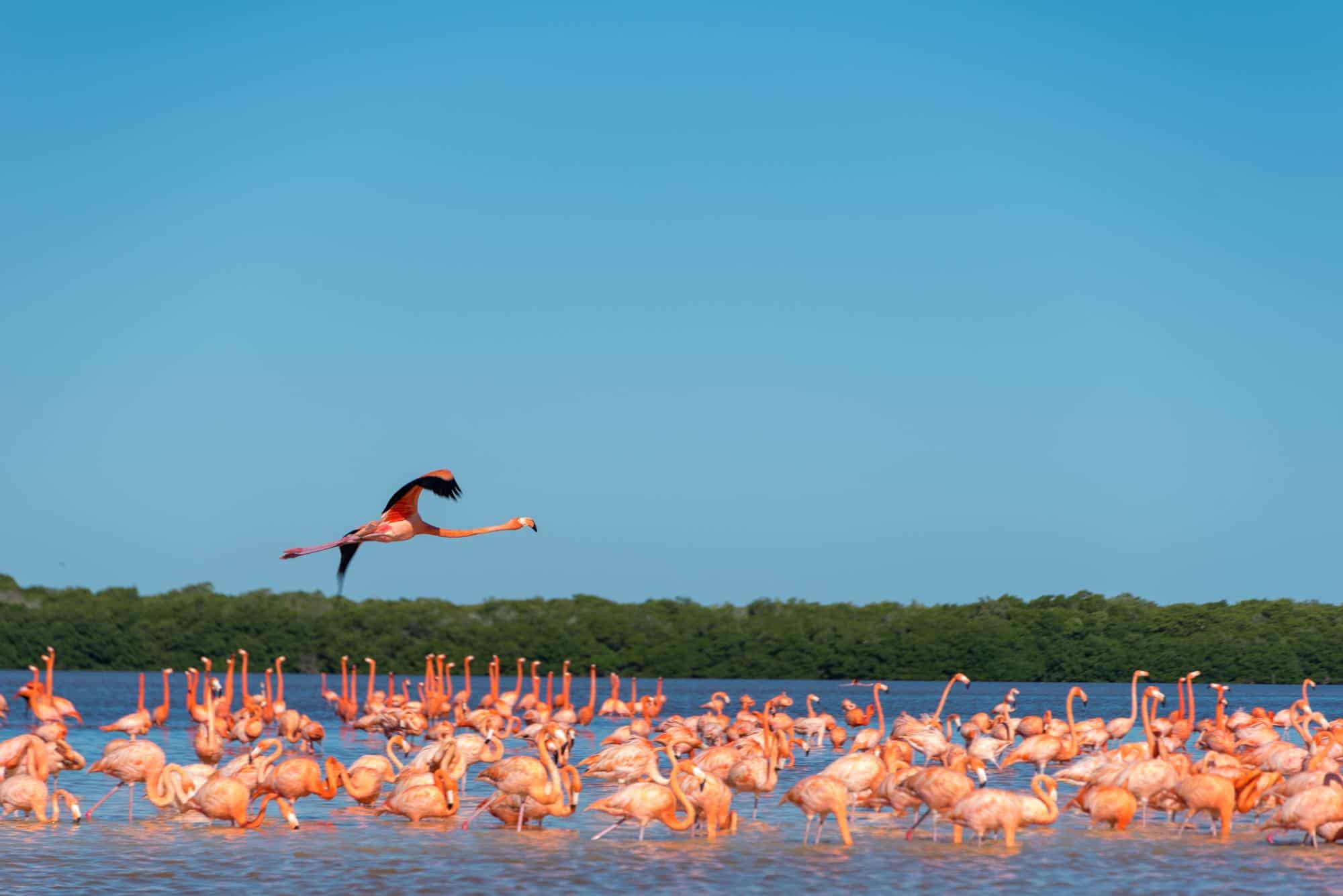
It boasts excellent weather all year round. There’s no winter at all; all you will have is one wet, humid season and one dry season.
During the dry season, it’s hot by day and cooler at night. The average yearly temperature in January is around 74F (23.5C), and 82F (28C) in July.
Transport wise Yucatán is well-connected and is well served with long-distance buses as well as local taxis, ‘collectivos’ and ‘camiones’.
There is an airport in Merida, the capital, which serves Mexico, Cuba, and parts of the U.S.A. About an hour away is the international airport in Cancun, where you can get both local and international flights.
Affordability and modern amenities are two key factors that attract retirees.
Lower cost of living than in the U.S., excellent healthcare facilities, plentiful shopping malls, commercial and cultural facilities, and all modern-day conveniences ensure that living in the Yucatán Peninsula is as comfortable as possible.
The ultimate beach lifestyle
For beach lovers, the coastal towns of the Yucatán Peninsula are the ultimate destinations.
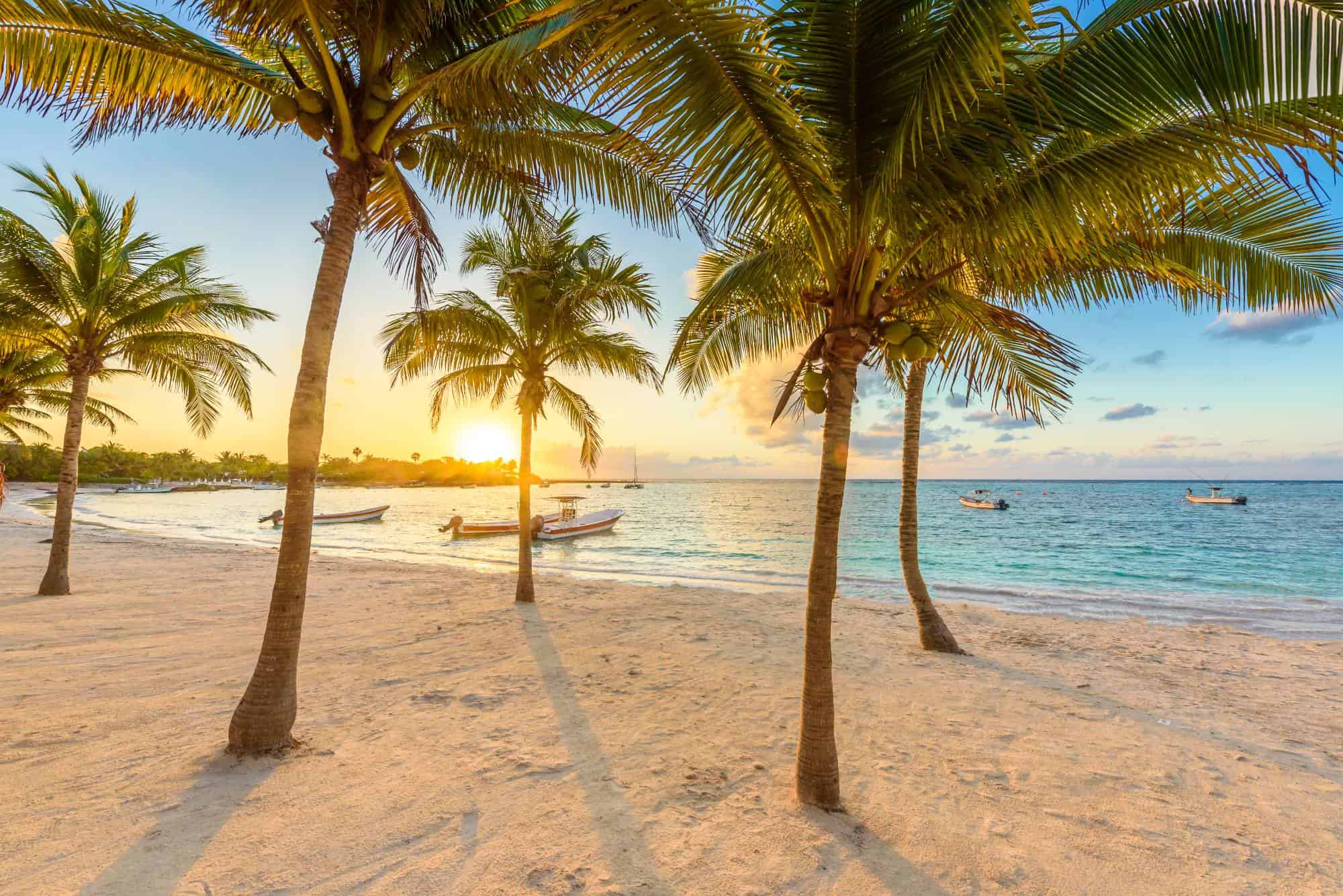
Nothing can beat a day out on a beach. Beaches are what attracts tourists and expats to this region. Some prefer the Gulf of Mexico shores, while others choose the emerald waters of the Caribbean Sea.
You might find that the Riviera Maya beaches are a bit too popular with tourists for your liking. Then join those who head to the Gulf of Mexico.
The beaches here are quieter than the popular Caribbean locations such as Playa del Carmen, Cancun or Tulum.
Some of them, like Celestun, are cozy and secluded, backed by thatched-roof restaurants and cafes.
There's the Ria Celestun Biosphere Reserve near Celestun Beach, which is home to many species of birds, especially flamingos.
El Cuyo beach is particularly popular with kite surfers and is also rated as one of the best beaches in the Yucatán Peninsula.
Chelem Beach and the neighboring town of Chuburna Puerto have a large expatriate community.
Off the beaten track are San Benito, San Bruno, and Uaymitun, where you can find beach mansions and upscale beach clubs.
You will always find something to do in Yucatán.
There is a lot to discover: ‘cenotes’, which are underground limestone sinkholes with cool fresh water popular for swimming and snorkeling; colonial buildings, haciendas, and tropical rainforests.
There are many opportunities for bird watching, scuba diving, swimming in cenotes, and exploring nature reserves.
Expats in the Yucatán Peninsula
As the region is popular with expats, a result, there are various support networks.
The Yucatán Times and Yucatán Living websites are great resources for information about events, news, facilities, hospitals in the region, etc.
There are quite a few expat Facebook groups focusing on the Yucatán Peninsula. This is where you can get the latest information, meet new friends, sell or buy stuff, get help, advice, and learn about upcoming events.
The cost of living
The Yucatán region offers a lower cost of living compared to the U.S., Europe, or even Mexico City. Housing costs are affordable here, except when purchasing and renovating a colonial house or hacienda.
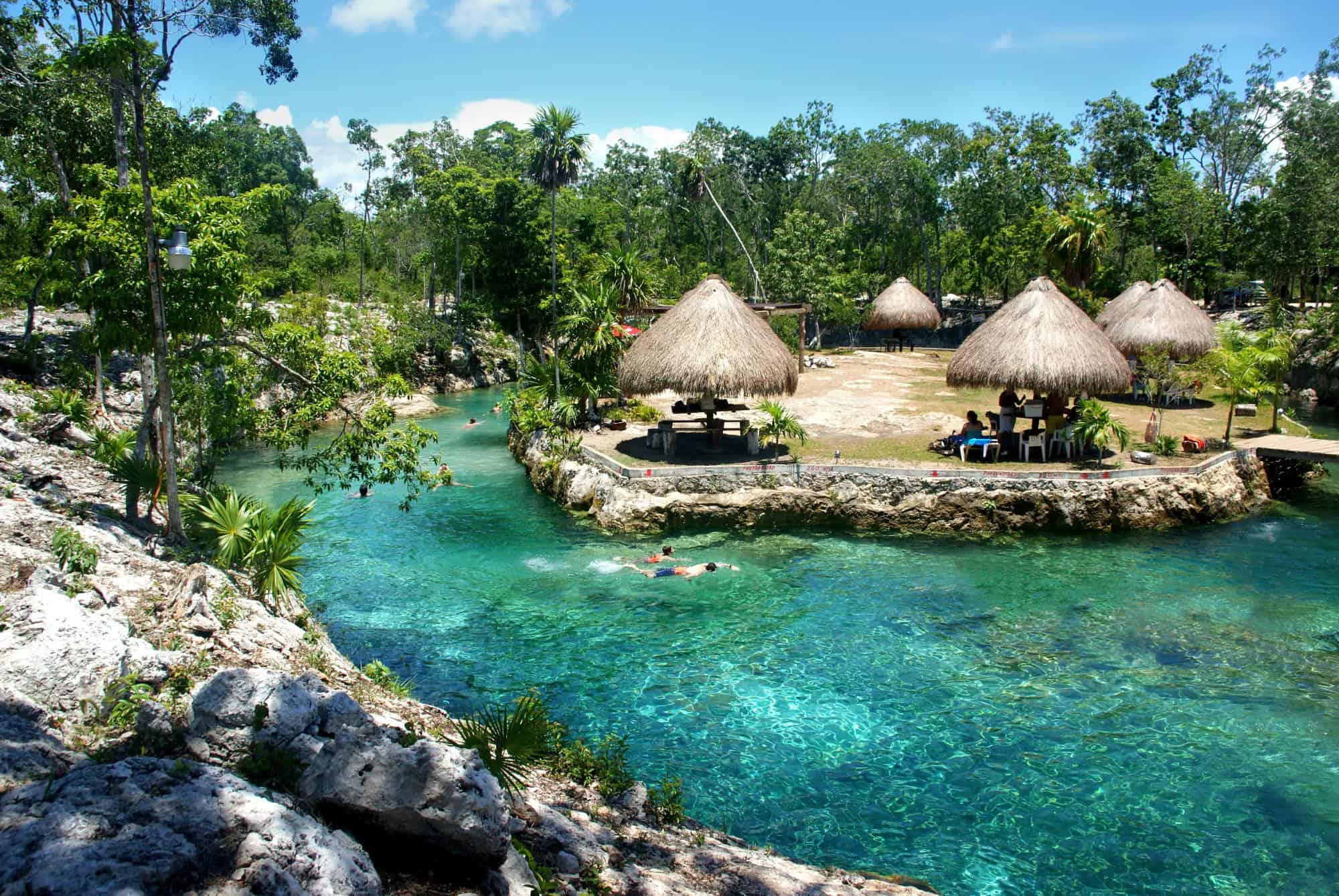
Merida is one of the most expensive locations on the peninsula. And yet, even there, you can have a really good life on a budget of $1,800 a month.
To rent a 2-bed apartment in Merida will cost you around £750, depending on the location. Add to this £75 for various utilities, £350-400 for groceries, $40 for public transport, £100 for healthcare, and about £70 for internet, and you will have over $350 left for entertainment.
Believe us, £350 in Yucatán can stretch much further than you can imagine.
Buying a property is also quite an inexpensive affair, although it’s possible to find amazing villas with stunning views that will cost you a significant amount of money.
Some expats find it attractive to transform and refurbish colonial homes in Merida. Prices in the historical quarter are higher than in the suburbs, so you have to pay more if you want to buy an old colonial renovation project in a good location.
If, however, you are after a less ambitious home, the prices will pleasantly surprise you. You can buy, for example, a 2-bed retirement casa in Progreso close to the beach for $90,000.
A 2-bed condo in the north of Merida, where expats prefer to settle down, will cost you about $85,000.
In Chelem, a fishing village and a very popular retirement location for expats, a 2-bed house starts from around $115,000, and a 1-bed luxury condo with an ocean view can be purchased at about $170,000.
In Cancun, another expensive location on the Caribbean side of the peninsula, you can rent a 3-bed detached house in a good location for about $650 a month.
There are townhouses and apartments that can be rented for as little as $200 if you are willing to compromise on the location.
In Campeche, the third Mexican state in the peninsula, it's possible to buy a charming colonial home for as low as $60,000.
As you can see, property prices vary widely depending on the location and the state of the property. However, on average, property is very affordable in the region.
If you are planning to buy or rent, start with our guide, How To Avoid Pitfalls When Renting Or Buying Property In Mexico
Another important thing to budget for is healthcare. Healthcare facilities in the region are very good and, crucially, inexpensive. Read more about your options and costs in our guide: Healthcare Options & Health Insurance For US Retirees In Mexico
Where can I retire in the Yucatán Peninsula, Mexico?
Whatever type of lifestyle you are looking for, you are sure to find it in the Yucatán Peninsula, as it offers everything: urban living, beaches, towns, and more remote villages.
Merida
The capital city of the Yucatan State and the largest city within it was voted in 2019 as the second safest city in all the Americas.
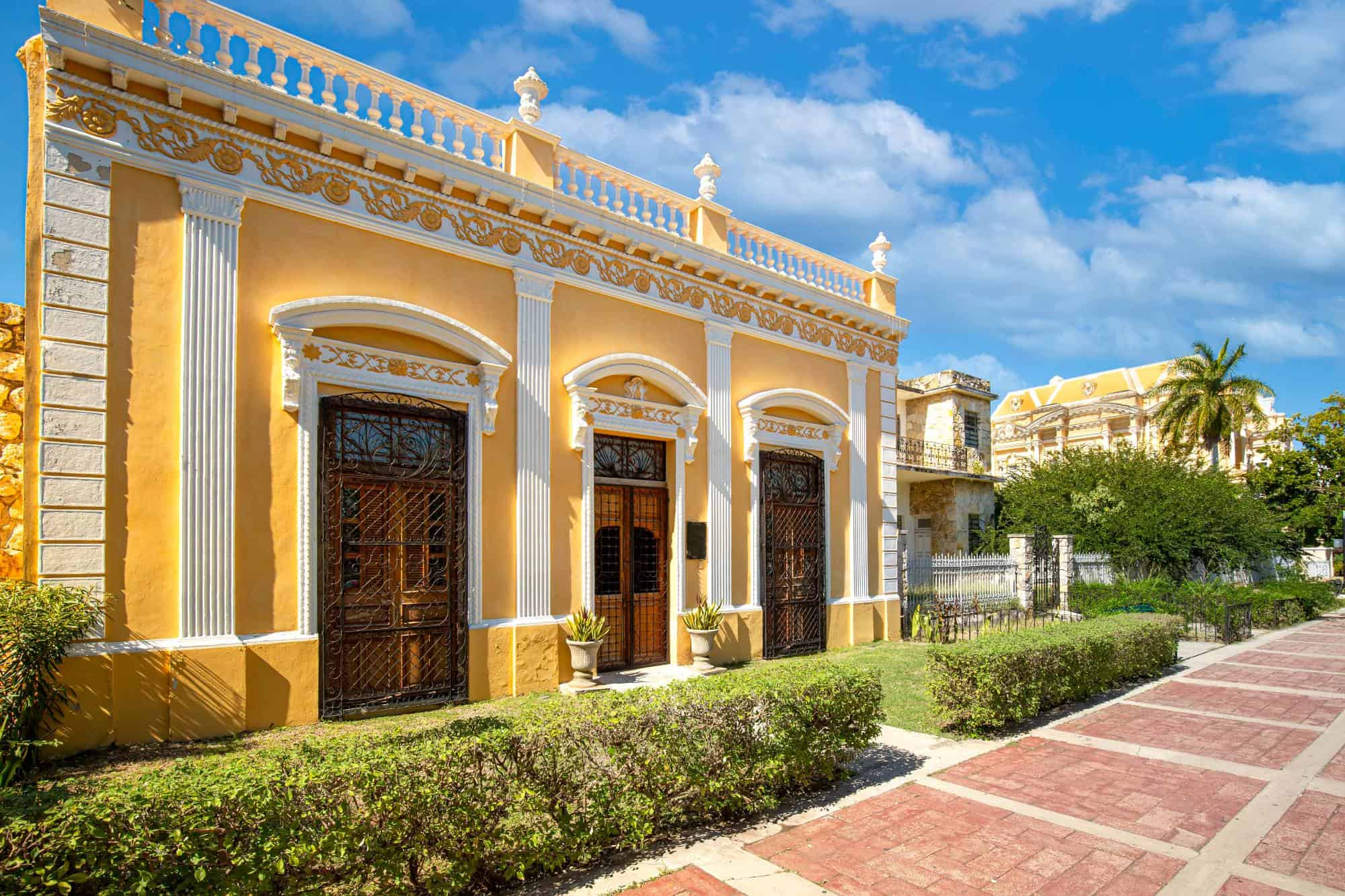
Known as the ‘Cuidad Blanca’, the White City, Merida, is a vibrant and attractive place full of life, culture, and beautiful colonial buildings.
It is located inland, so the nearest beach is about thirty miles away in Progreso, and yet so many expats love living in Merida and don’t mind driving for a nice day out on a beach.
Retired expats are fascinated by Merida’s colonial past and are known to purchase and refurbish colonial homes restoring them to their original splendor, as well as taking advantage of all the amenities that the city has to offer.
There is a spectacular English library in Merida with thousands of English books. The library serves as a meeting point for expats to mix and mingle as well as organize events and functions.
Merida’s central 'colonias' (neighborhoods) of Santa Ana and Santiago contain a high concentration of expatriates.
However, many expats prefer the North Merida area. It’s nice and very safe with many stores and restaurants.
Many expats will say how easy it is to adjust to a new life in Merida and that the adjustment is gradual and somewhat pleasant.
General advice, however, is to visit Merida before moving during the hot, dry season: April, May, and June. What many consider the best weather can be intolerable to some as it is very hot and humid here.
Progreso
Located thirty minutes away from Merida, Progreso is a city and a port on the Gulf of Mexico.
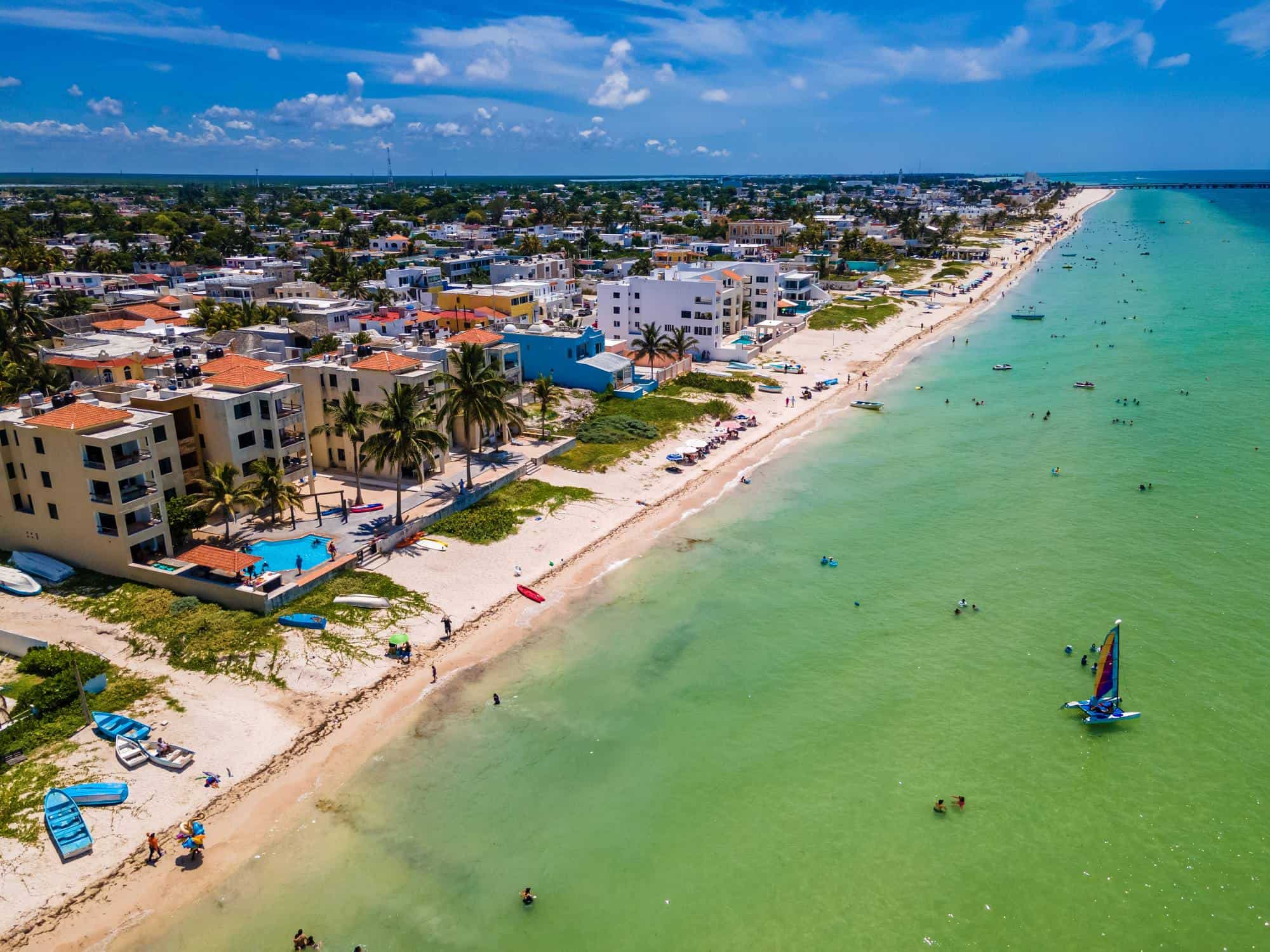
It is known for its oceanfront promenade, the Malecón, lined with beaches and thatch-roofed restaurants.
Progreso is definitely not your picture-perfect location, but it has all the amenities you need for a comfortable life, plus great beaches. Living near beaches during the hot and dry season can be very pleasant.
There is a close-knit expat community that offers various activities, meetings, art classes, and other events.
Progreso is ideal if you are looking to retire to Mexico on a limited budget and in a quieter spot.
Progreso is a 40-minute drive from Merida’s airport and is convenient for traveling and shopping in Merida.
The emerald waters of the Gulf of Mexico provide breezes that cool down the tropical heat. You can enjoy long walks along the Malecon, a great socializing spot in Progreso where residents usually meet up for a cup of coffee, a drink, or a full-blown night out.
In short, Progreso is an affordable real Mexican fishing and beach community. Not so pretty and a bit rustic, but convenient and definitely worth consideration.
As it is not such a popular tourist spot like the neighboring Riviera Maya -Tulum – there are many bargains, such as lots of land for as low as $10,000 USD and houses for sale for around $100,000.
Izamal
Nicknamed the ‘Cuidad amarilla’ due to the yellow colour of the buildings Izamal is designated by the Mexican government as a ‘Pueblo Magico’, a magic town.
Only cities and towns displaying a combination of natural beauty, cultural richness, and historical significance are awarded this title.
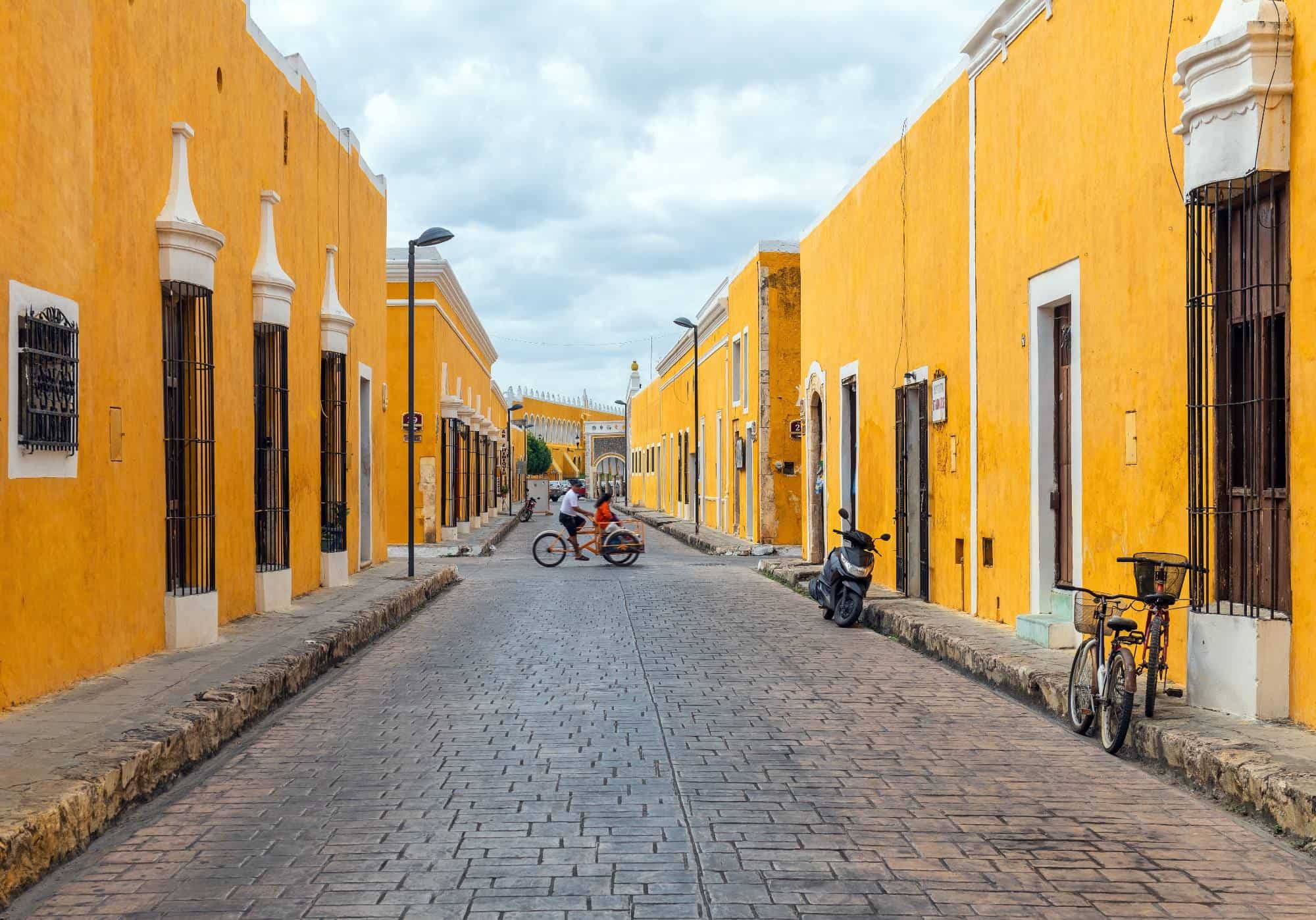
If you have never been to Izamal before, you will be stunned by how unusual and pretty the town looks.
Indeed, multiple rows of cobbled streets lined with charming, flat-roofed houses all painted in the same shade of rich yellow, with white framed windows and doorways, never fail to astonish the visitors.
Izamal is known for its craftwork markets and as a place to find pyramids dotted around.
Expats are drawn here due to the mixture of cultures – the history of the ancient Mayan people mixed with the Spanish colonial history and today’s modern population.
It’s a pure, unspoiled place as traditions and architecture are maintained and valued.
Merida is 45 minutes away if you need more extensive shopping and a taste of city life. The town is generally quiet, there’s not a lot of traffic and the local residents are very friendly.
Just like Merida, Izamal is not a beach town. It’s actually even further inland, so it can get very hot during the dry season.
Only a few expats are dotted around, but the general feeling about living in Izamal is very positive. Expats say it’s a small friendly community with absolutely no crime.
The town is perfect if you are looking for a quiet, tranquil, and attractive place to live.
Cholul
Cholul is a small town on the outskirts of Merida and is considered Merida’s remote neighborhood.
It is ideally located to access Merida’s city amenities.
Living in Cholul means you can enjoy a quieter town living while having all the facilities of Merida on your doorstep.
Another advantage is that the houses here are much cheaper than in Merida’s neighborhoods, which are closer to the center.
The town has largely grown in popularity for newcomers, but it still retains its small-town vibe, traditions, and customs.
However, in recent years, Cholul has become known for its new private residential developments.
New houses, apartments, and townhouses have been sprouting all over, making it one of the areas with the highest growth. Its also rapidly becoming the preferred place to invest in property by locals and foreigners.
Cholul is just 5 minutes away from Plaza Altabriza - a big shopping mall that caters to all your shopping and entertainment needs.
There’s also the San Pedro Cholula cenote, a beautiful semi-open natural pool that allows you to swim in its cool waters, practice snorkeling and dive in its depths of up to ten meters. You will appreciate it greatly in the heat of the dry season.
The Riviera Maya
Talking about retirement hotspots in the Yucatán Peninsula, it's impossible not to mention the Riviera Maya.
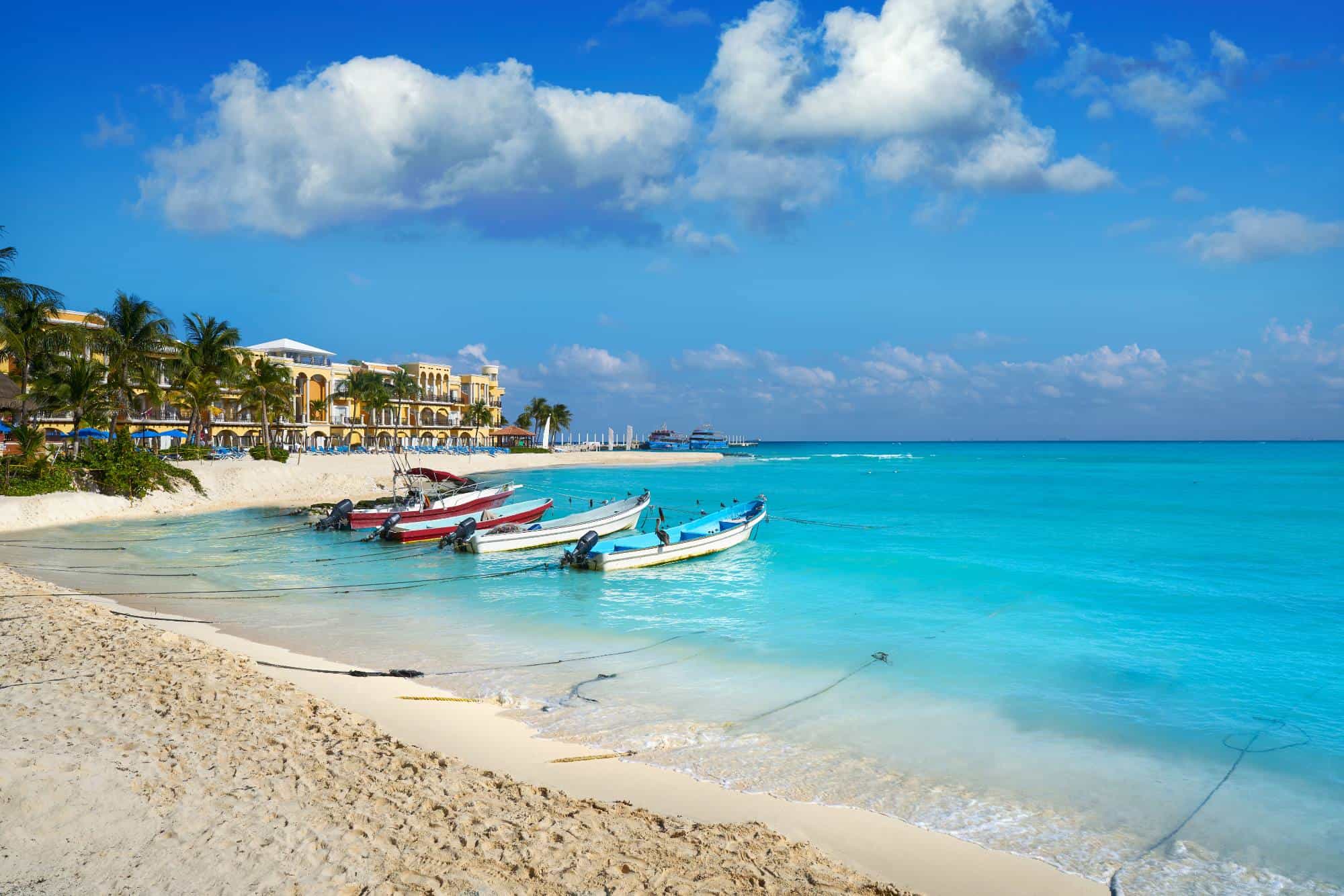
This stretch of the Caribbean coastline in the northeast of the Yucatán Peninsula in the Quintana Roo State is one of the most stunning coastline locations in Mexico.
The Riviera Maya, a coastline area that starts off the south of Cancun and runs all the way to Tulum, also encompasses such popular locations as Playa del Carmen, Puerto Morelos, Cozumel, Akumal, and others.
It’s a well-developed area with all the amenities you need for a comfortable and active retirement.
The government pours money into Cancun and the Riviera Maya to make it more attractive to visitors and private businesses. As a result, the area boasts high-quality infrastructure that expats and locals can benefit from.
For traveling within the country and abroad, Cancun International Airport, with its extensive list of international and domestic flights, is the best option.
Healthcare standards are high, so much so that the Riviera Maya is now a medical tourism hotspot. Expats living in the area have access to sophisticated and well-staffed clinics and hospitals.
Despite its popularity with tourists and expats alike, the Riviera Maya still keeps its authentic Mexican flavor, with the food, music, arts, and entertainment all routed in the local culture.
High standards of living with lower costs, amazing food scene, no winter, great golf courses, palm-tree-lined beaches, and thriving and friendly communities - what’s not to like?
Cancun
If you dream of vast turquoise beaches, eternal summer, endless entertainment, and a vibrant city lifestyle, Cancun should definitely be on your list.
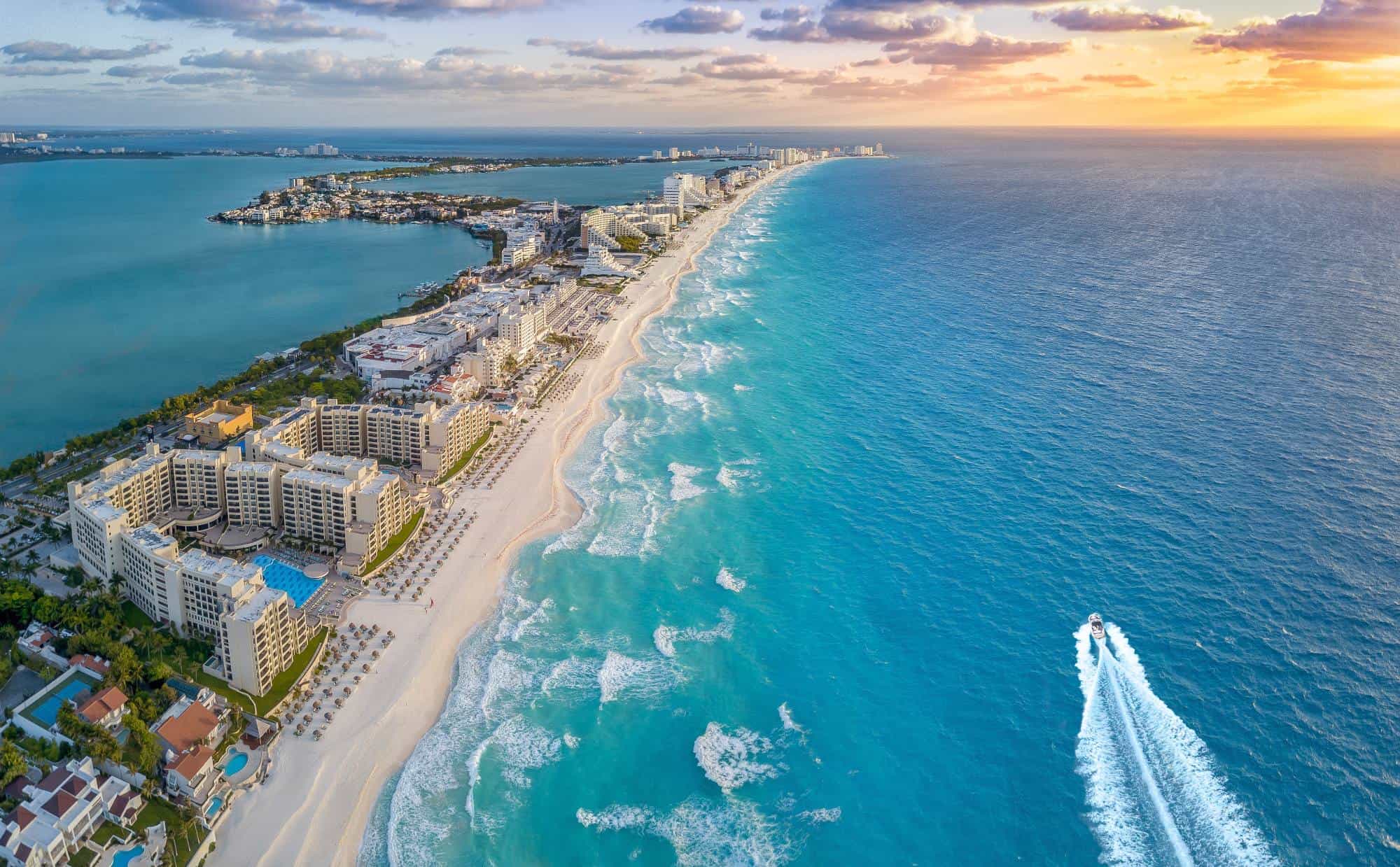
Cancun has everything a big city offers: entertainment, amenities, services, shopping, and more. It lacks culture and history, so if you really want to live in a pretty colonial town, Cancun might be the wrong choice. For day-to-day comforts, however, Cancun is unbeatable.
Life in Cancun can be characterized by just one word - easy. And this is why:
- The international airport is on your doorstep.
- Public transport is well developed, there are buses and taxes, so it’s pretty easy to live in Cancun without a car.
- English is spoken everywhere.
- It’s sunny and warm all year round.
- Top-class healthcare facilities provide excellent medical care, which you’ll find much more affordable than in the USA or Canada.
- Shopping options are abundant, from open markets to small family-owned shops to big shopping malls.
- Plenty of restaurants and cafes with all kinds of cuisine on offer to excite your tastebuds.
- Water-based activities are endless: fishing, diving, boating, snorkeling, swimming, surfing, paddleboarding, kayaking, wakeboarding, and more - all are available and affordable.
In short, Cancun is an easy option when you choose where to live in the Yucatan Peninsula. No wonder so many expats love living here. Find out more in our Living In Cancun guide.
Campeche
Out of the three Mexican states on the Yucatán Peninsula, Campeche is the one least preferred by expats. The only reason for this is that the state is further away from the international airports.
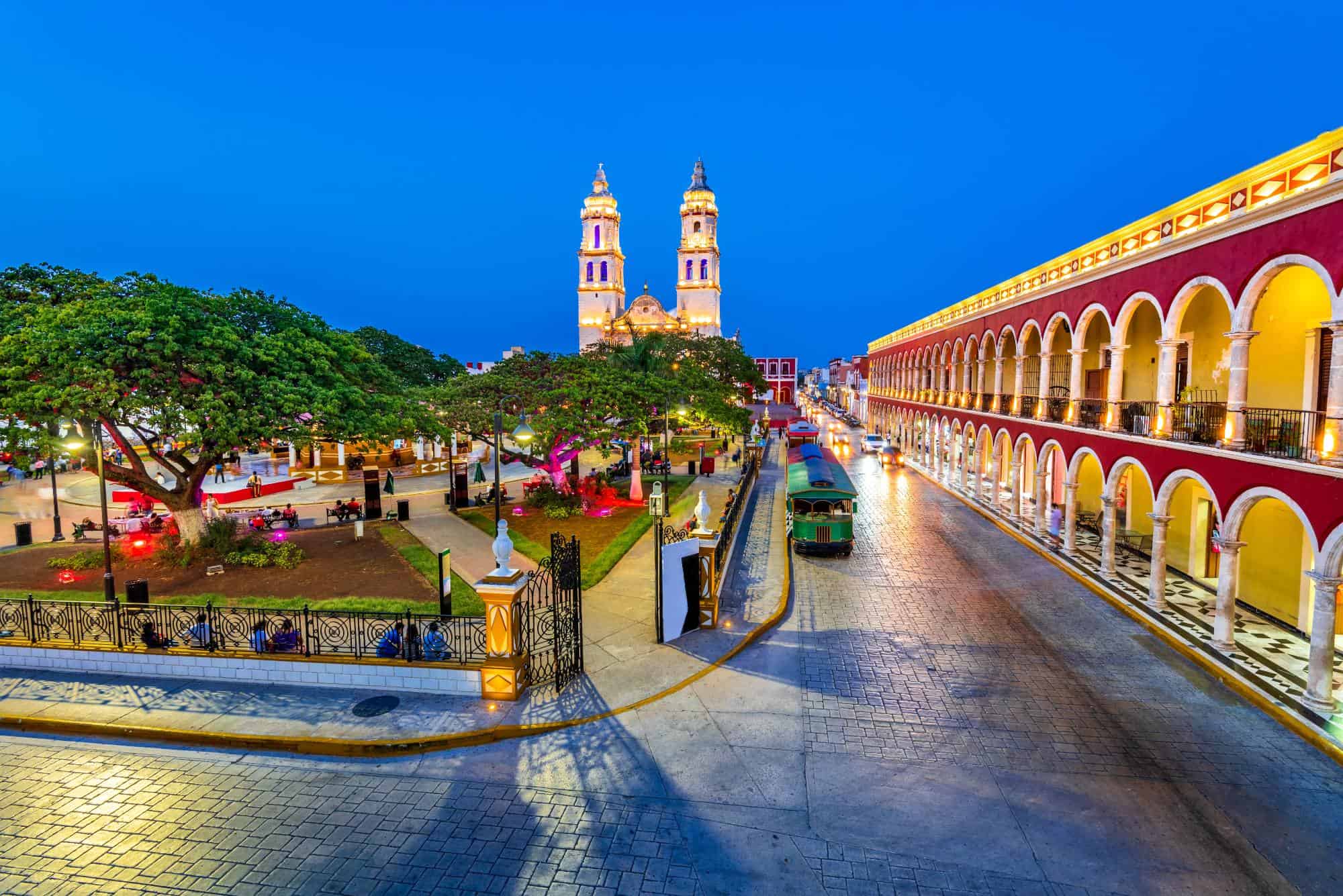
However, if you are looking for a coastal location with a true Mexican feel and colonial charm, not overrun by tourists, you should consider the state's capital, Campeche (yes, the same name).
You will find Campeche very affordable. It's possible to rent a 1-bed apartment in the center for about $170. Add about $70 for basic utilities and $45 for internet.
Campeche has a beautiful malecón which is the best spot for strolling and enjoying the sea views in the city. You will also find that the city is quite walkable and it's also easy to get around by bike.
It's a true, undiscovered gem. Yes, it's not as well connected and easy to travel to. However, being not very popular with tourists means the everyday prices are low, the culture is authentic, the lifestyle is unrushed, and the beaches are spectacular, unspoiled, and almost deserted.
Final thoughts on living in the Yucatan Peninsula
If you are considering moving to Mexico, the Yucatan Peninsular is worth consideration.
It's a diverse country, and choosing the best place to live in Mexico is no doubt challenging. But there are some substantial pros to living in the Yucatan peninsula that should put this location firmly on your top 10 list.
Living in the Yucatan Peninsula offers all amenities, a tropical climate, and colonial and historical architecture.
Yucatan is rich in history, languages, and traditions, with a cultural mix of Mexican, Spanish, and Mayan languages that are still spoken today. Yucatan Spanish is unique to Mexican Spanish spoken in the rest of Mexico, and you can find a mixture of the two dialects.
Expat communities are plentiful, and locals are very friendly. In short, there is a sense of safety and security together with a good quality of life at a lower cost than to the north of the border.
Other popular locations in Mexico to consider:
- 9 Must-Knows For Living In Mazatlán, Mexico
- What It’s Like Living In Puerto Vallarta, Mexico
- All About Living In Baja California Sur And La Paz
- What’s It Really Like Living In Puerto Escondido, Mexico
- Living In San Miguel De Allende As An Expat – What You Need To Know
You might find helpful:
- Living In Mexico As An Expat - a detailed relocation guide to Mexico: residency and paperwork, where to live, the costs, the pros and cons and how to settle down
- The Best Places To Live In Mexico For Expats - a detailed overview of the most popular expat locations in Mexico
- Didn’t find what you were looking for or need further advice? Comment with your question below, and we will do our best to help.
Secure Peace of Mind with Best-Value International Health Coverage
International Citizens Insurance provide free, no-obligation quotes from the leading international health insurance providers with plans tailored to meet your needs. Trusted by thousands of expats worldwide.










